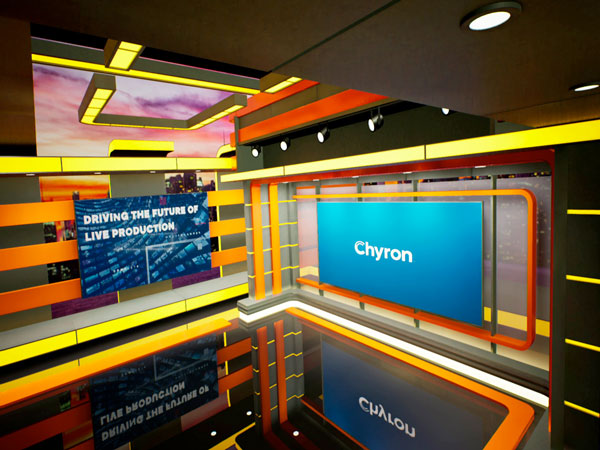Chyron PRIME VSAR 1.7 Release Simplifies Virtual Graphics Creation
The version leverages Unreal Engine 4.26 and increases the number of cameras per engine

MELVILLE, N.Y.—Chyron today released PRIME VSAR 1.7, which implements Unreal Engine 4.26, increases cameras per PRIME VSAR engine and adds new template-based tools to simply creating and managing broadcast-grade virtual sets.
The latest release makes it easier for designers to create compelling virtual graphics and puts power into the hands of producers and journalists to leverage assets across different channels and programs, the company said.
"Unreal Engine 4.26 brings some amazing new tools for designers, allowing them to make true-to-life animated character models and incredible natural environments with realistic lighting, atmosphere and water effects," said Mathieu Yerle, senior vice president of strategy and product at Chyron. "With Epic Games delivering these standout graphic features so consistently, we're able to focus our efforts on demystifying the Unreal VSAR workflow, turning it into something broadcasters can use to drive ROI in their everyday programming."
Version 1.7 also introduces a weather forecast template that is automatically controllable from a connected data source and a virtual screen template that can function as an easy-to-manage video wall within a virtual set, the company said.
"Not only do these tools streamline the creation process for designers, but all of these elements are directly editable and controllable by journalists and producers within any industry-standard NRCS via Chyron's CAMIO MOS-integration and template-management system. That's huge," said Dan MacDonald, senior product marketing manager at Chyron. "Now virtually the entire newsroom staff can take advantage of these incredible Unreal graphics and treat them just like they would any common news graphic, such as a lower third."
The PRIME VSAR engine itself is also receiving upgrades, now allowing two cameras to connect to a single system and thereby greatly reducing expenses in multi-camera deployments. Additionally, users can now dedicate an engine for real-time SDI previews of VSAR scenes for confidence monitoring of every take in their show, it said.
More information is available on the company’s website.
Get the TV Tech Newsletter
The professional video industry's #1 source for news, trends and product and tech information. Sign up below.
Phil Kurz is a contributing editor to TV Tech. He has written about TV and video technology for more than 30 years and served as editor of three leading industry magazines. He earned a Bachelor of Journalism and a Master’s Degree in Journalism from the University of Missouri-Columbia School of Journalism.

